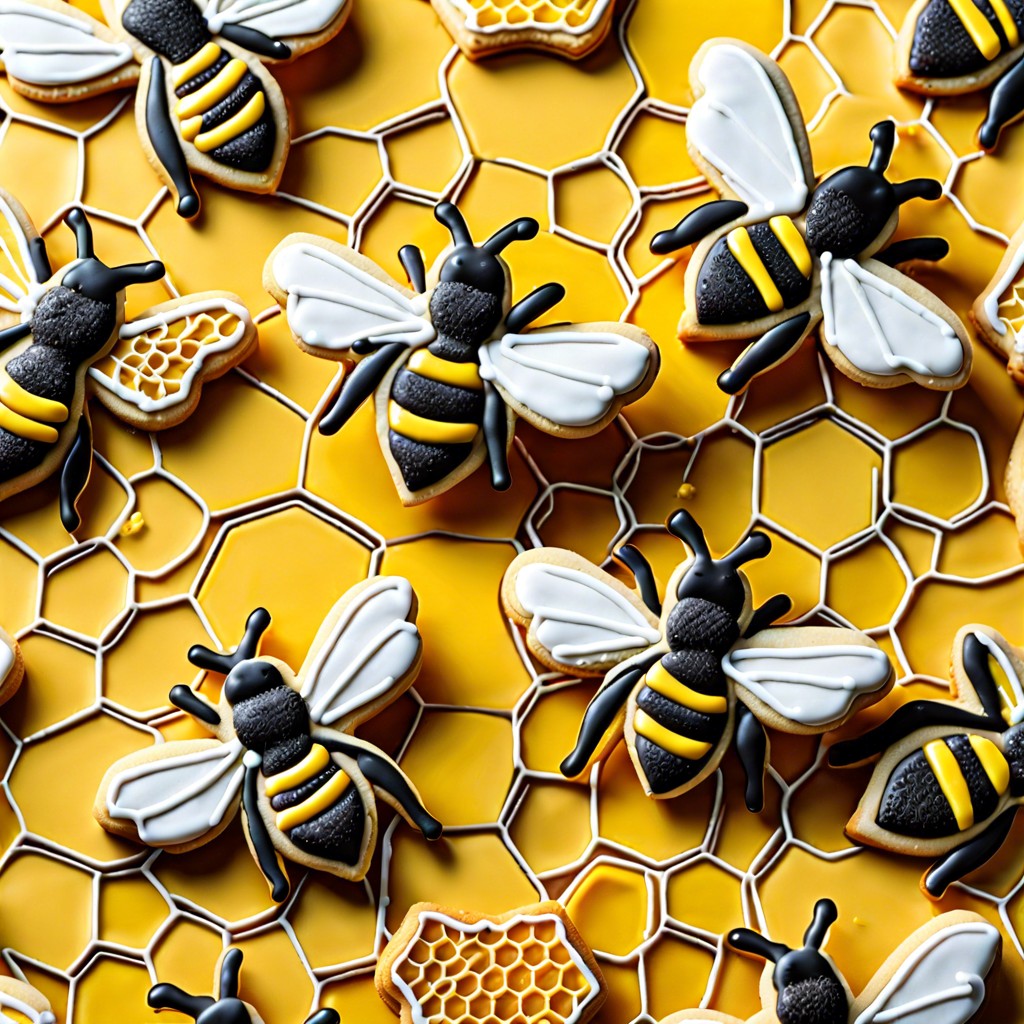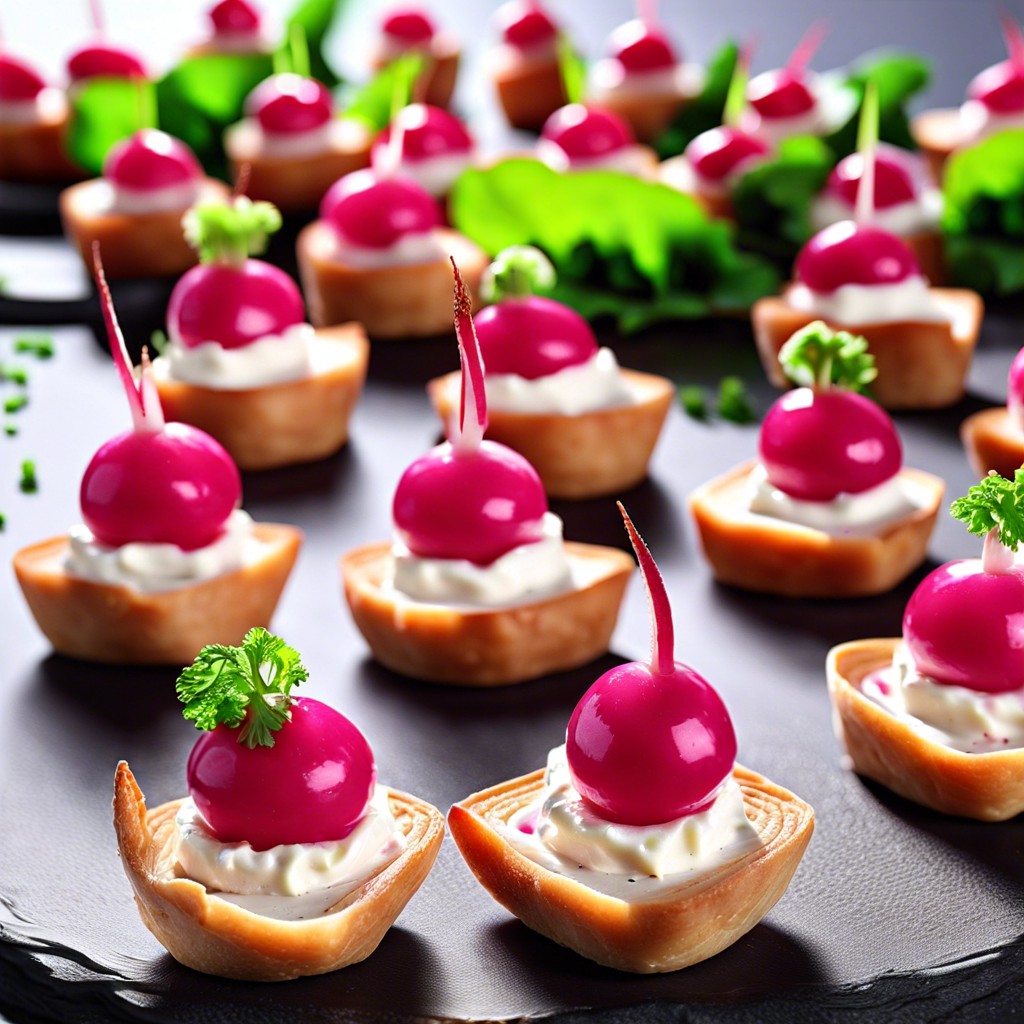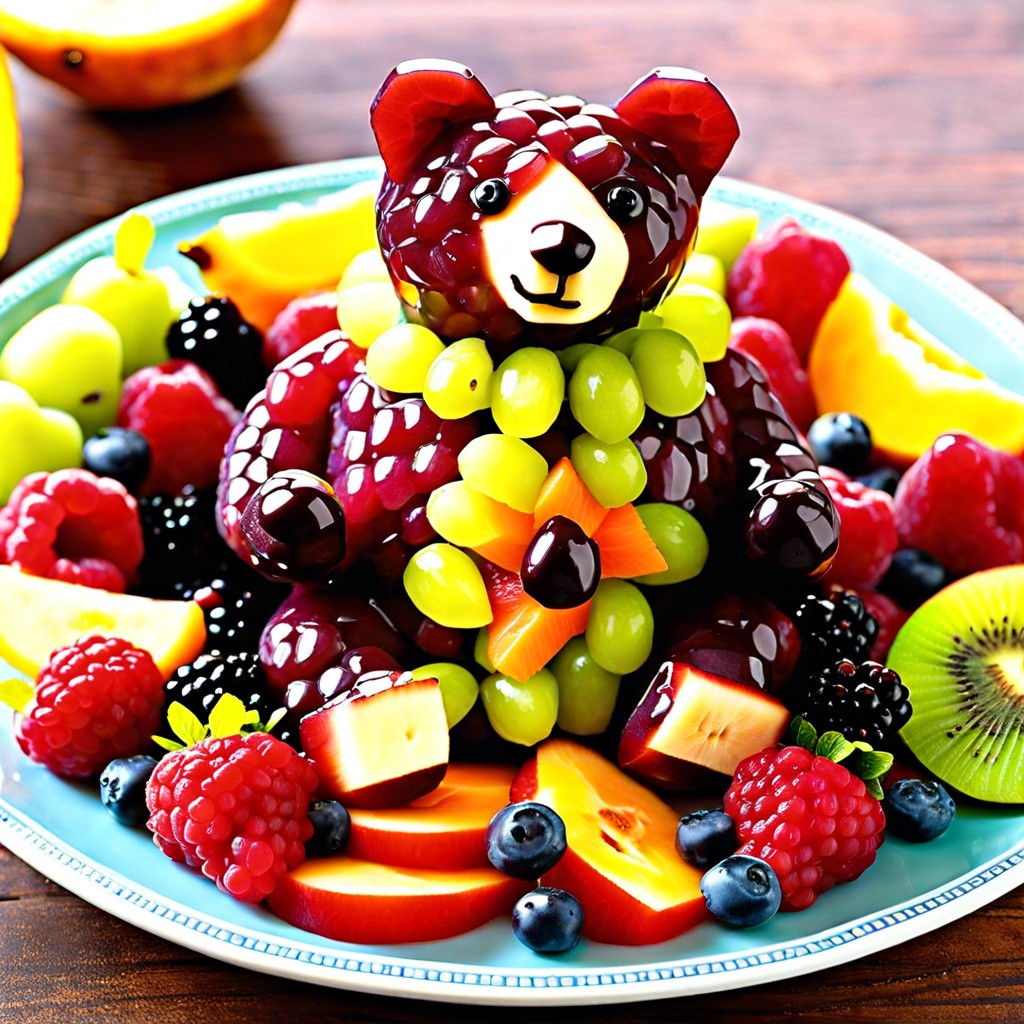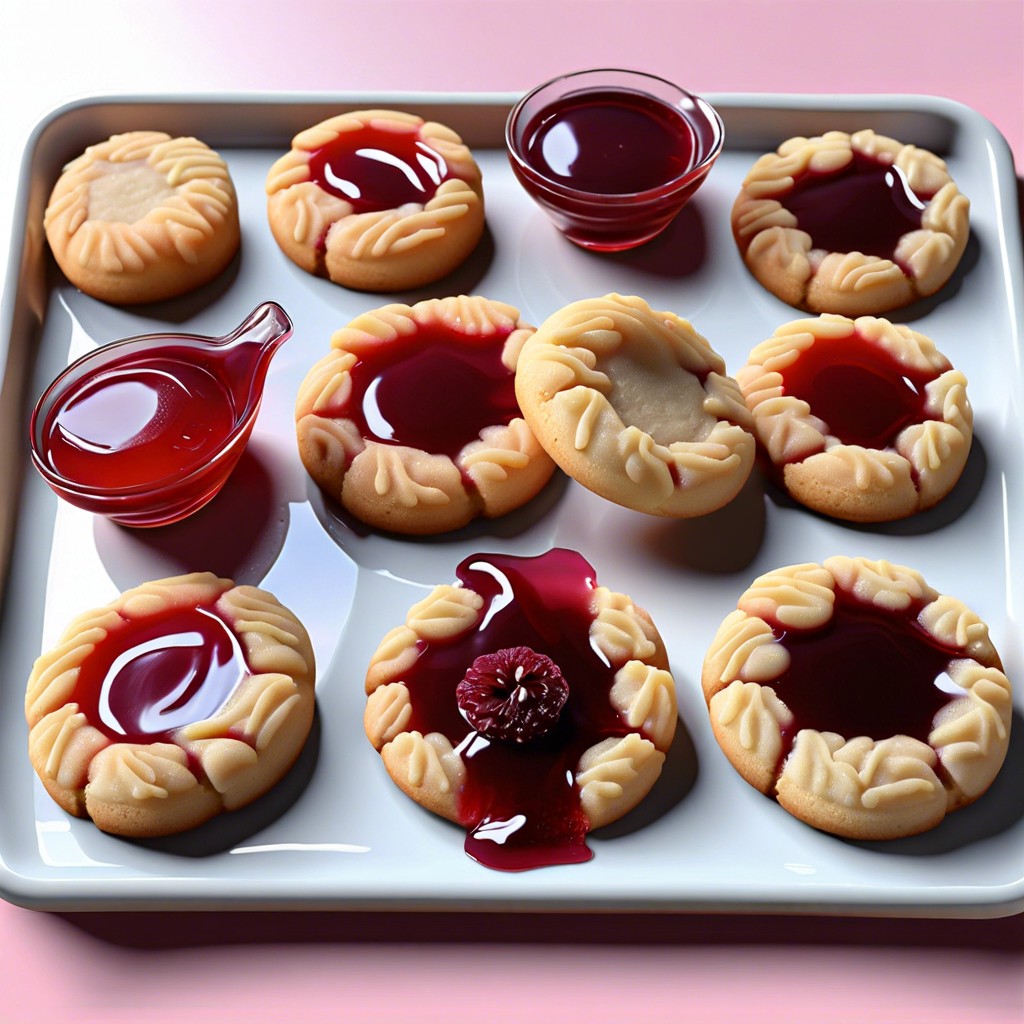Discover the latest snack trends in this comprehensive guide, as we explore exciting flavors and innovative options that are set to dominate the snacking scene in 2022.
As we approach the end of 2021, it’s time to start looking ahead to what the new year will bring. And when it comes to snacking, there are always new and exciting trends on the horizon.
From unique flavor combinations to healthier options, snack companies are constantly innovating and keeping our taste buds guessing. So, let’s take a sneak peek at some of the snack trends that are expected to take center stage in 2022.
Get ready for some mouth-watering inspiration!
Healthier Snack Options

As consumers become more health-conscious, the demand for healthier snack options continues to grow. In 2022, we can expect to see a wider range of snacks that are not only delicious but also good for our bodies.
From baked chips and veggie crisps to air-popped popcorn and roasted chickpeas, there are plenty of healthy alternatives available.
One trend that is gaining popularity is snacking on fresh fruits and vegetables. With an emphasis on whole foods and plant-based diets, many people are turning towards raw produce as their go-to snack option.
Fruits like apples or bananas paired with nut butter or hummus make for a satisfying mid-day pick-me-up.
Another popular choice among health enthusiasts is protein bars made with natural ingredients such as nuts, seeds, dried fruit or dark chocolate instead of artificial sweeteners or preservatives.
Plant-based Snacks
These snacks are made from ingredients such as nuts, seeds, fruits and vegetables that provide essential nutrients like protein and fiber. They also tend to be lower in calories than traditional snack options.
One of the most exciting things about plant-based snacking is the variety of flavors available. From savory roasted chickpeas to sweet fruit bars made with dates and nuts, there’s something for everyone.
And with so many different types of plant-based proteins on offer – including soybeans, lentils and quinoa – it’s easy to find a snack that fits your dietary needs.
Another benefit of choosing plant-based snacks is their positive impact on the environment. Plant-based foods require fewer resources like water and land compared to animal products which can help reduce greenhouse gas emissions associated with food production.
Keto and Paleo-friendly Snacking
These low-carb, high-fat diets require a different approach to snacking than traditional options. Snacks that are keto-friendly typically contain healthy fats like nuts or avocado while being low in carbs and sugar.
Paleo snacks focus on whole foods such as fruits, vegetables, nuts, seeds and lean proteins. They avoid processed foods altogether.
Some popular keto-friendly snack options include cheese crisps made from 100% cheese without any additives or preservatives; beef jerky with no added sugars; nut butter packets for an easy protein boost on-the-go; pork rinds which are high in fat but carb-free.
For those following the paleo diet plan some great choices include fruit bars made with only natural ingredients like dates & dried berries ; kale chips seasoned with sea salt & olive oil instead of artificial flavors ; grass-fed beef sticks free from antibiotics/hormones/added nitrates/nitrites etc.; coconut chips roasted until crispy for a satisfying crunch without the guilt!
High-Protein Snack Choices
It also plays a crucial role in maintaining muscle mass, keeping you feeling full for longer periods of time, and regulating blood sugar levels. Therefore, it’s no surprise that high-protein snacks are becoming increasingly popular among health-conscious consumers.
Some examples of high-protein snack choices include hard-boiled eggs, Greek yogurt with berries or nuts, beef jerky or biltong (dried meat), protein bars made with whey or plant-based proteins like soy or pea protein isolate.
These snacks not only provide a quick energy boost but also help to keep hunger at bay between meals. They’re perfect for those who lead busy lifestyles and need something convenient yet nutritious on-the-go.
Moreover, incorporating more high-protein snacks into your diet can be beneficial if you’re looking to lose weight as they tend to be lower in calories than traditional carb-heavy options like chips and crackers while still providing satiety.
Low-sugar Alternatives
Snack companies are responding to this demand by creating snacks that use natural sweeteners like stevia, monk fruit, or erythritol instead of refined sugars. These low-sugar options not only satisfy your sweet tooth but also provide a healthier alternative to traditional sugary snacks.
Some examples include protein bars made with dates and nuts instead of added sugars or chocolate-covered fruits that use dark chocolate with lower sugar content. Many snack brands have started using coconut sugar as an alternative to white granulated sugar in their products.
Consumers can now enjoy their favorite treats without worrying about spiking blood glucose levels or experiencing a crash later on.
Demand for Gluten-free and Allergen-free Options
In fact, according to a report by Grand View Research, the global gluten-free product market is expected to reach $43.65 billion by 2027.
This trend has led many snack companies to develop products that cater specifically to those with dietary restrictions or preferences. From nut-free granola bars and dairy-free cheese puffs, there are now plenty of delicious options available for everyone.
One reason why this trend is gaining momentum is due in part because consumers are becoming more health-conscious overall. They want snacks that not only taste good but also provide nutritional value without compromising on flavor or texture.
Moreover, as awareness around food allergies increases globally so does the need for safe snacking alternatives especially when it comes down children’s lunchboxes where schools have strict policies regarding certain ingredients such as nuts or eggs which can cause severe allergic reactions among students who suffer from these conditions.
Gut-health Snacks
The gut is home to trillions of bacteria that play a crucial role in our overall health and well-being. As more people become aware of this connection, there has been an increased demand for snacks that support gut health.
Probiotic-rich foods like yogurt have long been associated with digestive benefits, but now we’re seeing other snack options emerge as well. Kombucha drinks are becoming increasingly popular due to their probiotic content, while fermented vegetables like kimchi and sauerkraut are also gaining traction.
Prebiotics are another type of food that can benefit the gut by providing fuel for beneficial bacteria to thrive on. Snacks made from prebiotic-rich ingredients such as chicory root or Jerusalem artichoke can help promote healthy digestion.
It’s clear that consumers want snacks that not only taste good but also offer functional benefits like supporting their digestive system.
Functional Ingredients
Consumers today want more from their snacks, and that’s where functional ingredients come in. These are ingredients that offer specific health benefits beyond basic nutrition, such as boosting energy levels or aiding digestion.
Some of the most popular functional ingredients in snacks include probiotics for gut health, adaptogens for stress relief and improved mental clarity, collagen for skin health and joint support, turmeric for its anti-inflammatory properties, and MCT oil to promote weight loss.
As consumers become increasingly aware of the link between diet and overall well-being, demand is growing rapidly for snack options with added functionality. Snack companies have responded by incorporating these beneficial ingredients into their products to cater to this trend.
The Rise of Functional Snacks
These snacks are designed to provide specific health benefits, such as improved digestion, increased focus and concentration, or reduced inflammation. With the rise of functional ingredients like turmeric, matcha tea powder and adaptogens like ashwagandha root extract in mainstream food culture over the past few years it’s no surprise that these ingredients have found their way into snack foods too.
Brands are now incorporating these functional ingredients into their snack offerings to create products with added nutritional value. For example, you can find protein bars infused with collagen for skin health or mushroom chips for immune support.
The demand for functional snacks is driven by consumers who want healthier options but don’t want to sacrifice taste or convenience. As people become more aware of what they’re putting in their bodies and how it affects them on a daily basis – from mood swings to gut issues – they’re looking for ways to incorporate healthy habits seamlessly into their lives without feeling deprived.
Sustainability Focus
In 2022, we can expect to see a rise in upcycled ingredients and packaging made from recycled materials. Brands will be looking for ways to reduce their carbon footprint by using renewable energy sources and implementing eco-friendly practices throughout the production process.
Consumers are also demanding transparency when it comes to sustainable practices, so snack companies will need to provide clear information about their sourcing methods and environmental impact. This shift towards sustainability is not only good for the planet but can also attract new customers who prioritize ethical consumption.
Some brands may even go beyond just being sustainable by actively supporting social causes or donating a portion of profits towards environmental initiatives.
Upcycled Ingredients
Upcycled ingredients refer to using parts of fruits, vegetables or grains that would otherwise go to waste. This not only reduces food waste but also creates unique flavors and textures in snacks.
For example, some companies are using spent grain from breweries as a base for their crackers or chips. Others use pulp from juicing fruits as an ingredient for their bars or bites.
These upcycled ingredients add nutritional value while reducing environmental impact.
Consumers are becoming more conscious about sustainability and want to support brands with eco-friendly practices. Snack companies can differentiate themselves by incorporating upcycled ingredients into their products while appealing to consumers’ desire for healthier snacking options.
Snacking On-the-go
With more individuals opting for convenience over sit-down meals, snack companies have had to adapt their products to meet this demand. As a result, we’ve seen an explosion of portable snacks that can be easily consumed while commuting or running errands.
From protein bars and trail mix to fruit cups and jerky sticks, there’s no shortage of options when it comes to snacking on-the-go. And with the rise of online shopping and delivery services like Amazon Prime Now or Instacart, it’s easier than ever before for consumers to stock up on their favorite snacks without having to leave home.
But with convenience often comes compromise – many pre-packaged snacks contain high amounts of sugar or artificial ingredients that can be detrimental to our health if consumed regularly. That’s why it’s important for consumers who prioritize healthy eating habits not only look at packaging but also read labels carefully before making a purchase decision.
Fortunately, there are plenty of healthier options available too! Fresh fruits like apples or bananas make great grab-and-go choices; nuts such as almonds provide both protein and fiber; hummus cups paired with veggies offer a satisfying crunch while being low in calories; energy balls made from whole foods give you sustained energy throughout your day without any added sugars!
Innovative Packaging and Delivery Methods
One way they’re doing this is through innovative packaging and delivery methods. From eco-friendly materials to unique shapes and designs, snack packaging has come a long way in recent years.
One trend that’s gaining popularity is the use of sustainable materials like biodegradable plastics or compostable paper-based packages. These options not only reduce waste but also appeal to consumers who prioritize sustainability.
Another exciting development in snack packaging is the use of technology such as QR codes or augmented reality (AR) on product labels. This allows customers to access additional information about the product, including nutritional facts or recipe ideas by simply scanning a code with their smartphone.
Delivery methods have also evolved beyond traditional retail stores with subscription boxes becoming increasingly popular among consumers who want regular deliveries of curated snacks straight to their doorstep. DIY kits that allow customers to create customized snacks at home are another emerging trend in snacking delivery methods.
International Flavors
With people becoming more adventurous with their food choices, snack companies are taking note and introducing new and exciting flavors from around the globe. From spicy Korean snacks to tangy Indian treats, there’s something for everyone when it comes to international snacking.
One of the most popular international flavor profiles is Japanese-inspired snacks. The unique combination of sweet and savory flavors has been gaining popularity over recent years, with many snack companies now offering products such as wasabi-flavored nuts or soy sauce-infused crackers.
Another emerging trend is Latin American-inspired snacks that feature bold spices like chili powder or cumin mixed with traditional ingredients like corn or beans. These flavorful options offer a healthier alternative to traditional chips while still satisfying cravings for something crunchy and salty.
Emerging Flavor Profiles
Consumers are becoming more adventurous with their taste preferences, and snack companies are taking notice. From spicy to sweet, savory to sour – there’s a whole world of flavors out there waiting to be explored.
One emerging flavor profile that has been making waves in recent years is umami. This Japanese term refers to a savory taste sensation that can be found in foods like mushrooms, soy sauce, and miso paste.
Umami adds depth and complexity to snacks while also satisfying our cravings for something salty or meaty.
Another up-and-coming flavor profile is sour-sweet combinations such as tamarind or passionfruit paired with lime or lemon juice for an unexpected burst of tanginess followed by sweetness.
In addition to these unique tastes from around the globe, we’re also seeing classic flavors being reinvented with modern twists such as truffle-flavored popcorn or matcha-infused chocolate bars.
Artisanal Snacks
These are typically handcrafted and made in small batches using high-quality ingredients. Artisanal snacks offer a unique taste experience that cannot be found in mass-produced products.
Consumers are increasingly seeking out artisanal snack options as they look for healthier and more sustainable alternatives to traditional snacking options. Many of these snacks use locally sourced ingredients, which not only supports local businesses but also reduces the carbon footprint associated with transportation.
From gourmet popcorn to handmade chocolates, there is no shortage of delicious artisanal snack options available on the market today. These products often come with higher price tags than their mass-produced counterparts due to the quality of ingredients used and the time-intensive production process involved.
Subscription Snack Boxes
These curated boxes are a great way to discover new snacks that you may not have tried otherwise. They often include a mix of sweet and savory options, as well as healthier alternatives for those who want to indulge without the guilt.
One of the benefits of subscription snack boxes is that they can be tailored to your specific dietary needs or preferences. For example, if you follow a vegan or gluten-free diet, there are plenty of options available that cater specifically to these requirements.
Many subscription services offer flexible plans so you can choose how often you receive your box – whether it’s monthly or quarterly – and some even allow you to customize the contents based on your personal taste preferences.
Subscription snack boxes provide an exciting opportunity for foodies looking for something new and different in their snacking routine.
DIY Snack Kits
These kits come with all the necessary ingredients and instructions for making your own healthy snacks at home, without any added preservatives or artificial flavors. They’re perfect for those who enjoy cooking and experimenting in the kitchen, as well as those looking to save money on pre-packaged snacks.
With DIY snack kits, you can customize your snacks according to your taste preferences and dietary needs. For example, if you’re following a low-carb diet like keto or paleo, you can choose ingredients that fit within these guidelines.
Or if you have food allergies or intolerances such as gluten sensitivity or lactose intolerance, you can select options that cater specifically to these requirements.
Some companies offer subscription-based services where customers receive monthly boxes filled with different DIY snack kit options based on their preferences. This is a great way of discovering new recipes while also having fun in the kitchen.
Snacks Become “Mood Food”
With more people becoming aware of the link between diet and mental health, it’s no surprise that this trend is gaining traction.
Snack companies are now incorporating functional ingredients like adaptogens, probiotics, and CBD into their products to help reduce stress levels or promote relaxation. For example, you might see snacks infused with chamomile or lavender for a calming effect or those containing dark chocolate for an energy boost.
The idea behind mood food is not just about satisfying hunger but also providing emotional comfort through snacking. As such, expect more snack options marketed towards specific moods such as “calming,” “energizing,” or even “romantic.”.
Nostalgic Treats
Nostalgia is a powerful force in snacking, and many of us crave those treats that remind us of our childhood or special moments from our past. From candy bars to chips and cookies, there are plenty of nostalgic snacks that continue to hold a special place in our hearts (and stomachs).
In 2022, we can expect more brands tapping into this trend by bringing back old favorites or putting new twists on classic flavors. So whether you’re craving some Dunkaroos or looking for a taste of your favorite childhood cereal in snack form, keep an eye out for these nostalgic treats making their comeback!
FAQ
What snacks are in high demand?
In high demand, consumers prefer snacks with high protein content such as nuts, trail mixes, and seeds (41% market share), followed by protein bars (20%).
What are the global snack trends in 2023?
Global snack trends in 2023: resurgence of on-the-go snacking, unique flavor offerings, affordable prices, and healthier alternatives as consumers resume pre-pandemic activities.
How has the pandemic influenced consumer preferences in snacking?
The pandemic has led to a significant shift in consumer preferences in snacking, with a greater focus on health, convenience, and comfort.
What role does sustainability play in the snack trends of 2022?
Snippet: "In 2022, sustainability takes center stage in snack trends, as consumers demand eco-friendly packaging and responsibly sourced ingredients.
How are innovative ingredients shaping the future of snack products?
Innovative ingredients are shaping the future of snack products by enabling the development of healthier, more sustainable, and diverse options catering to evolving consumer preferences.




